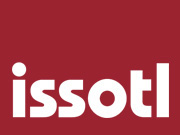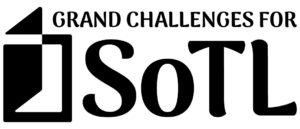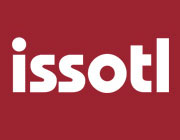GC Home | GC1 | GC2 | GC3 | GC4 | GC5 | GCs in Action | History
Grand Challenge for SoTL #2
SoTL practitioners study postsecondary teaching and learning to better understand and improve how to encourage students to be engaged in learning. Engaged learners are motivated to value how, why, and what they learn and to continue evolving as learners.
What is it?
Engaged learning is intentional and active, a conscious process focused on making connections between or with whatever is being learned. Without this deliberate process, learning is passive and unlikely to lead to long-term retention. Engaged learners are also metacognitive, aware and appreciative of the process of learning. In this way, engagement is closely related to motivation, which sustains the learner’s willingness to continue with the effortful work of learning, ultimately becoming self-directed learners (Tekkol and Demirel 2018).
Why and how is this Grand Challenge important?
Encouraging students to be engaged in their learning, both the content and process of learning, is important because the goal of education is for students to be successful not only within the contexts of formal education, but also as they engage in life beyond academia. Deep learning that will be accessible as needed at a later time requires deep, engaged processing. Engaging in one’s learning process provides a path towards self-directed and autonomous learning, which promotes success throughout life as new contexts and challenges present themselves.
Engaged student learning is a grand challenge for several reasons. First, there is commonly a disconnect between what educators consider to be the process of education and what students consider it to be. A common student perception is that learning is simply about remembering information (McGuire 2015) and that educators’ role is to convey that information. As information becomes increasingly available, the perceived value and motivation for the effort of learning information is reduced. In reality, becoming educated includes much more than learning information, and it requires engagement, effort, and energy to sustain the complex learning process – it is hard work (see also Grand Challenge #3). Learners are less likely to become engaged if they think differently about and don’t value what it means to learn.
Second, encouraging learners to be engaged in their learning process is a grand challenge because learners are individuals who are motivated by different things, and their motivations change over time. However, educators typically teach multiple learners at the same time. Thus, any pedagogical choices they make are likely to only motivate and engage some students some of the time (Hüvös 2023). As higher education becomes more accessible to a wider range of students, the diversity of motivations will also grow, increasing the challenge to educators.
Third, even if educators do their best to attend to and encourage student engagement, it is often difficult to discern when students are truly engaged in the learning process, many aspects of which are invisible (Bass and Eynon 2009). Thus, even though student engagement is often thought to be associated with observable activity and behaviors, that is not always true. For example, what can appear to be a passive experience of listening to a lecture can sometimes be a very engaging cognitive experience within a student’s mind. Or, an activity that seems to be engaging students might do so only in superficial ways with respect to deep processing and making connections with what is to be learned.
A final grand challenge of engaging students in their learning process is that it requires a supportive learning environment. Such an environment promotes focused attention on and perceived value for what is to be learned rather than containing distractions that reduce resources to put toward learning. Distractions can be external (e.g. loud sounds, misbehaving classmates) or internal (e.g. daydreaming, social anxieties, or other worries). Supportive learning environments help students stretch their learning and feel comfortable taking risks, which results in increased student self-efficacy and ability to take ownership, as well as evolve as motivated, independent learners. Such supportive learning environments are essential to engaging students in their own learning, yet creating and maintaining them is non-trivial. They require physical resources, which might not be equitably distributed across different educational environments. They also require educators to navigate many social and psychological dynamics including interactions with their own and students’ identities (see also Grand Challenge #4).
What’s needed to address this Grand Challenge?
The multiple challenges above underscore the complex nature of meaningfully engaging students in the learning process. In order to address it, higher education needs to reconceptualize the goal of a higher education degree and what it means to become educated. It is not just about obtaining a degree. Deep and sustained learning is the goal, which requires engagement and effort on the learner’s part.
Modifications will also need to be made to traditional course designs, programs, and learning environments, which assume mostly homogeneous learners. While common learning outcome expectations can be established within our courses and programs, a variety of paths should be created to achieve those outcomes in order to create and sustain engagement across the broad spectrum of learners entering higher education. These flexible pathways should occur within supportive learning environments so that learners are not unnecessarily distracted and they feel encouraged to explore and engage in their learning in new ways. One avenue to explore for creating more effective and engaging learning environments is to involve students in shaping their own learning experiences in higher education (Mercer-Mapstone and Abbot 2020).
Finally, educators need to investigate ways to make the invisible (e.g. motivation and deep engagement) visible for both students and teachers (Bass and Eynon 2009). Part of this effort will interleave with Grand Challenge 3 to better understand the learning process, including affective and social components.
How might SoTL practitioners study this Grand Challenge?
| What is? |
|
| What works? |
|
| What’s possible? |
|
| Conceptual Frameworks |
|
—
References
-
Bass, Randy, and Brett Eynon. 2009. “Capturing visible evidence of invisible learning.” Academic Commons, January, https://academiccommons.org/january-2009/capturing-the-visible-evidence-of-invisible-learning/
-
Hüvös, Anna. 2023. “Teaching Students How to Learn.” Educational Utopias: Liber Amicorum Alkeline van Lenning. https://openpresstiu.pubpub.org/educational-utopias
-
McGuire, Saundra Yancy. 2015. Teach Students How To Learn : Strategies You Can Incorporate into Any Course to Improve Student Metacognition, Study Skills, and Motivation. Sterling, VA: Stylus.
-
Mercer-Mapstone, Lucy, and Sophia Abbot. 2020. The Power of Partnership: Students, Staff, and Faculty Revolutionizing Higher Education. Elon, NC: Elon University Center for Engaged Learning. https://doi.org/10.36284/celelon.oa2.
-
Tekkol, İlkay Aşkin, and Melek Demirel. 2018. “An Investigation of Self-directed Learning Skills of Undergraduate Students.” Frontiers in Psychology 9: 2324.
Recommended Citation
Scharff, Lauren, Holly Capocchiano, Nancy Chick, Michelle Eady, Jen Friberg, Diana Gregory, Kara Loy, and Trent Maurer. “Grand Challenges for SoTL #2.” International Society for the Scholarship of Teaching and Learning, November 2023. https://issotl.com/grand-challenges-for-sotl/gc-sotl-2/


